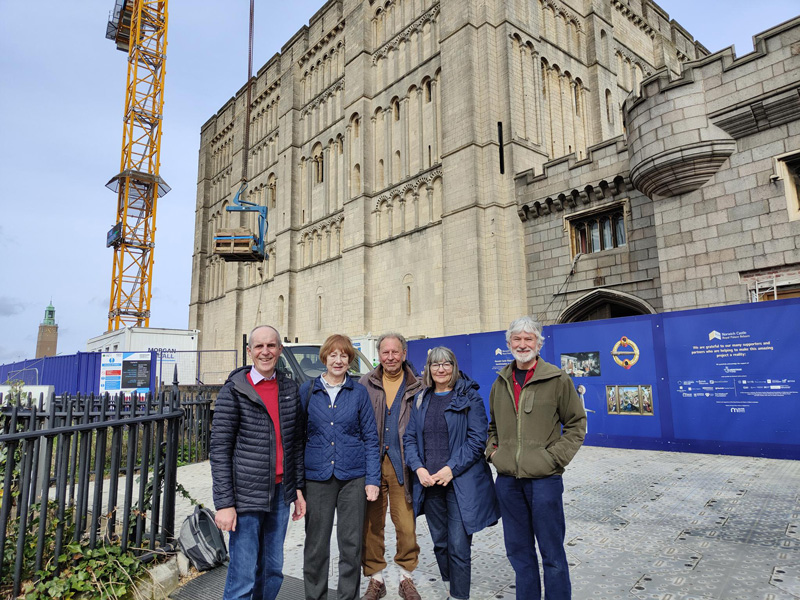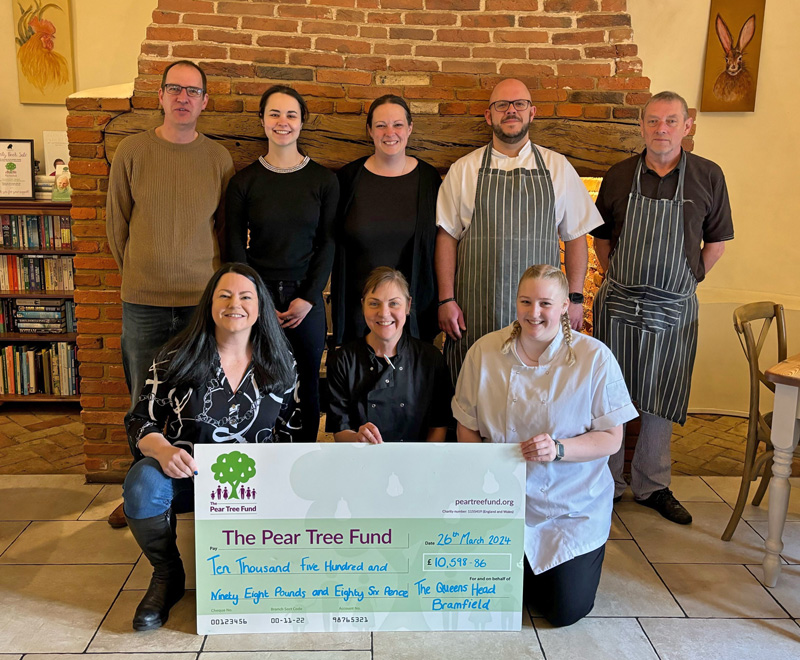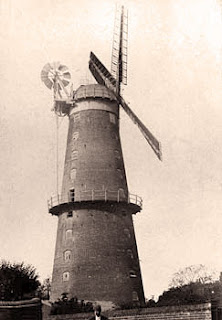 c.1890
c.1890Gt Yarmouth Southtown Tower Mill
Gt Yarmouth Southtown tower mill, which was often known as High Mill or Press’s Mill was 102 feet to the lantern at the top and was the tallest windmill ever built in England, extending to 12 storeys including the ogee cap. The top of the lantern on the cap stood a further 20 feet higher. At ground level, the base of the mill was 40 feet in diameter (also reported at 46 feet) with walls 3 feet thick and it was said that carts could drive into the mill to load up inside the tower.
The mill had 4 double shuttered patent sails with an 84 foot span that drove 4 pairs of stones. The ogee cap held an 8 bladed fantail and the stage was on the 6th floor. The windshaft was reported to have weighed 5 tons and when combined with the cap, gallery and fantail the weight was said to have totalled 15 tons.
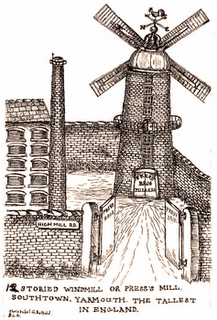 Sketch c.1890
Sketch c.1890
The mill worked both day and night; a double shift of four men each was worked. In 1854 during the Crimean War, the mill came into national prominence when its flour was supplied to Lord Raglan’s army and shipped by a number of Yarmouth’s famous clipper schooners, chartered to race to the Black Sea ports.
 Sketch c.1890
Sketch c.1890
When the mill was demolished in 1904, the bricks used to build a whole row of terraced houses. The spot where the mill stood was then occupied by nos. 35 & 36, High Mill Terrace, Gatacre Road and is indicated by those two houses having red chimney pots, the others being of stone colour. The sails were taken to Roughton_Mill_Hill_towermill as that mill was also owned by the Press family.
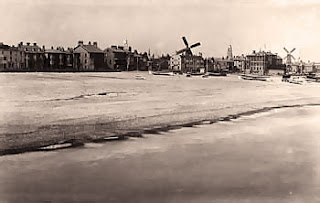 c.1890
c.1890
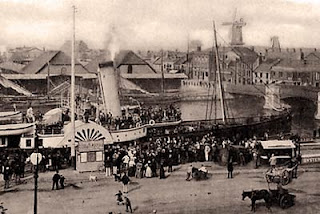 Port scene near Haven Bridge c.1900
Port scene near Haven Bridge c.1900
News from the past . . .
St. Ann’s Foundry, King Street,
Norwich, June 28th 1853
Mr. H. Gambling,
Sir,
Having examined the High Mill, Southdown, I beg to say I will undertake to execute the following repairs. viz. 1 new clamp to Stock 34ft long 12″x12″. To take down the 4 sails and repair do. with new canvas to vanes, new screws & sail irons where necessary, to ease the neck brass, to make a new tail brass, to find new cogs and gear the wheel to drive the flourmills, with the cogs now in the Mill, one wood rigger to do. – to find cogs and gear 2 stone nuts, and repr. 2 pr. universal joints to flourmills with Men’s time at Mill taking down and refixing sails &c. in a workmanlike manner will amt. to the sum of Sixty Four Pounds five shillings.
£64.5.0
I am,
Sir,
£64. 5. 0. Your Obedt. & Hble. Servt.
for Thos. Smithdale,
John G. Buttifant
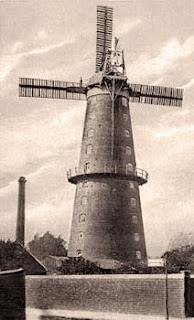 c.1900 not long before demolition
c.1900 not long before demolition
Mr. A. J. Thrower, Great Yarmouth Millwright who worked on the High Mill (Southtown, Yarmouth) etc. told me in 1951, “The Sails from the High Mill were fitted to Roughton Mill, so she must have been very powerful.”
Foreward to article Press Family of Norfolk, Martin H. Press – 9th December 1969
For more history about these mills and many others, please visit – www.norfolkmills.co.uk


